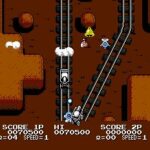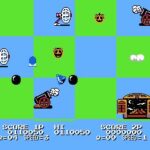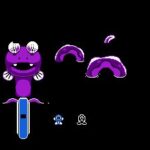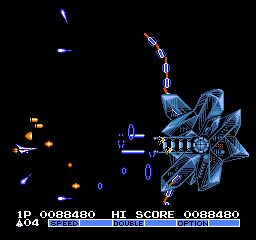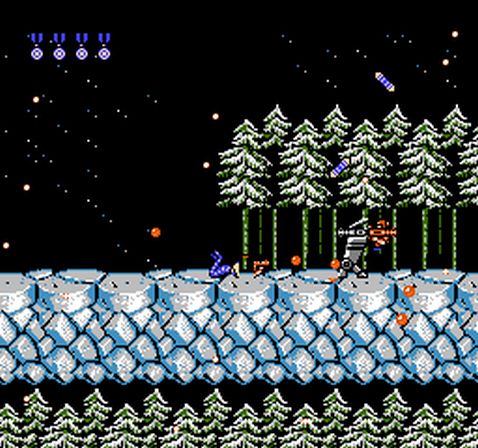Developer: Konami Publisher: Konami Release: 09/29/89 Genre: Shooter
Stinger was a game I was not particularly fond of. Maybe I was too young to appreciate the nuance of juggling bells while fighting enemies or maybe I found it too wacky for my tastes. Either way I didn’t like it. I would later gain a new appreciation for the Twinbee series starting with Detana!! Twinbee. Before then however Konami would give the series another shot on the Famicom with Twinbee 3: Poko Poko Daimaou. This import only title is a vast improvement over its predecessor and only let down by its length and lacking difficulty.
Twinbee 3 is much more focused game than Stinger. Rather than switching between vertical and horizontal stages it loses the latter. It is a wise choice in my opinion; trying to juggle bells in a side scrolling format was more trouble than it was worth. In fact the series would stick to the vertical format from here on. The action is more frequent yet the game does not suffer from the performance problems of most NES shooters such as flicker. There are not as many ground targets as before but honestly I don’t miss that aspect. The increased intensity is only the first of many changes in Twinbee 3 however.
The list of power-ups has been paired back significantly. The ones left are speed-up, double shot, laser, and options. I am of two minds when it comes to this. On one hand cycling through bell colors while enemies take pot shots at you could be frustrating. With less options that isn’t as much of an issue. But at the same time it is a boring selection and bell juggling is what made the series unique. Even the juggling isn’t as intense. The order of the colors is randomized although speed ups are the most common. There is one new power-up, the matchstick. Grabbing the matchstick will set the next bell on fire which will grant temporary invulnerability. I say temporary but it lasts a decent bit which is overkill in a game that is already easy as is.
Twinbee 3 is incredibly accessible. You can set the starting number of lives to nine, adjust the difficulty, and tackle the first four stages in any order. By default the game is incredibly easy. Despite the increased action and your reduced weapon options you’ll still have little trouble blowing through the game on the normal setting. The off kilter boss battles present somewhat of a challenge but there are so few of them. More on that in a bit. Clouds aren’t as plentiful as the later titles but still abundant enough that you are rarely without a weapon. But what truly makes the difficulty so low is the Soul Recovery system.
To be fair it isn’t just the soul recovery system alone. When you take a hit you can lose one of your arms. Losing both arms results in the loss of ground targeting bombs. Previously an ambulance to recover both would only appear once per life. Now it appears every time an arm is blown off. You do not notice how much you need bombs until they are gone. The Soul recovery system creates a ghost whenever you die. If you catch it you will regain all of your lost weapons. And with that all tension from death is gone. Bumping up the difficulty to hard presents somewhat of a challenge but not much. But at the very least you get a different ending for your trouble.
Probably the biggest knock against Twinbee 3 is its length. There are only five levels and the experience is over right when it starts. While it is nice that you can tackle the first four levels in any order it there’s not much choice. Ii is a shame too as the game has seen a significant visual overhaul. There are more moving parts in each stage and the performance does not suffer regardless of the number of enemies onscreen. Each level is themed with appropriate enemies even though it can still be a bit strange. The bosses are the visual highlight and the most impressive. And weird. But the game is so short you don’t have enough time to appreciate them. With two or three more levels Twinbee 3 would have been fantastic.
In Closing
This is a tough one to nail down. It is disappointing that Twinbee 3 is so short but what is there is enjoyable. But enough to track down? On its own no but as part of a collection yes.


